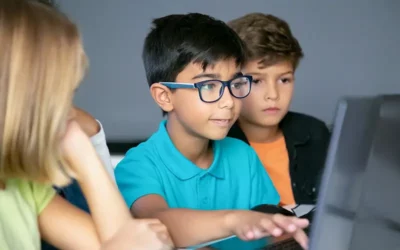In today’s rapidly advancing world, science education plays a crucial role in shaping the minds of young children. It ignites their curiosity, nurtures critical thinking skills, and fosters a love for exploration. One of the most engaging tools for scientific discovery is a microscope. By allowing children to observe the hidden wonders of the world, microscopes enhance their learning experience and provide a gateway to a world of knowledge.
Table of contents
Benefits of Microscopes for Kids
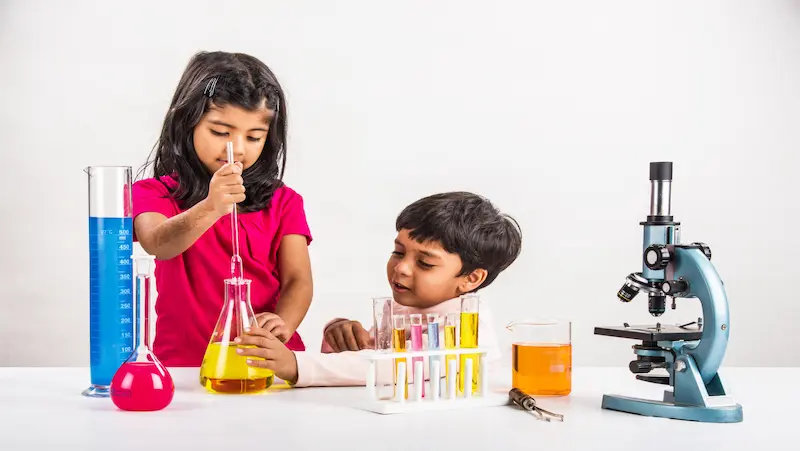
Introducing microscopes to children offers numerous educational and developmental benefits. First and foremost, it sparks their curiosity. Microscope exploration is one of the most captivating kids’ activities, fostering a love for science and learning through hands-on experience.
Microscopes make fantastic educational gifts for kids, offering an exciting way for young scientists to explore the wonders of the microscopic world while having fun and nurturing their curiosity for science. Microscopes encourage children to ask questions, make observations, and seek answers, promoting a lifelong love for learning.
Furthermore, microscopes nurture critical thinking skills. By exploring and analysing samples, children learn to make connections, draw conclusions, and think scientifically. This process enhances their problem-solving abilities and teaches them to approach challenges with an investigative mindset.
Microscopes offer a wide array of educational and developmental benefits for children. Let’s explore some of the key advantages:
Exploring the microscopic world through interactive microscopes not only offers educational insights but also serves as a creative outlet, promoting stress management for kids by engaging them in captivating scientific discoveries.
Stimulating Curiosity: Microscopes captivate children’s imaginations by revealing a hidden world that is invisible to the naked eye. As they observe objects magnified under the lens, their curiosity is piqued, and they develop a desire to explore and understand the intricacies of the natural world.
Enhancing Scientific Exploration: Microscopes provide children with the opportunity to engage in hands-on scientific exploration. They can examine various specimens, such as plant cells, microorganisms, or even their own skin cells. This firsthand experience fosters a deeper understanding of scientific concepts and encourages a sense of wonder and discovery.
Developing Critical Thinking Skills: Using microscopes encourages children to analyse and interpret what they observe. They learn to make connections between different structures, draw conclusions based on evidence, and develop hypotheses. This process enhances critical thinking skills for kids and nurtures their ability to approach problems scientifically.
Encouraging Attention to Detail: Microscopic observation requires keen attention to detail. Children learn to observe minute structures, patterns, and textures. This attention to detail cultivates their observation skills, which can be beneficial not only in scientific pursuits but also in other areas of learning and life.
Fostering Patience and Perseverance: Exploring samples under a microscope requires patience and perseverance. Children must adjust the focus, position the sample correctly, and make careful observations. This process teaches them the value of patience, persistence, and the rewards of thorough examination.
Inspiring Career Aspirations: Introducing children to microscopes at an early age can ignite a passion for scientific fields. As they uncover the wonders of biology, chemistry, or other disciplines, they may develop a desire to pursue careers in science, medicine, or research. Microscopes serve as a stepping stone towards a world of endless possibilities.
By embracing microscopes as educational tools, parents can nurture their children’s love for science, enhance their cognitive skills, and ignite their curiosity about the world around them. It’s an investment in their future as lifelong learners and critical thinkers.
Factors to Consider When Choosing a Microscope for Kids

Engaging in fun & educational activities for kids, such as exploring the microscopic world with the best microscopes, can ignite a lifelong passion for science and discovery. When selecting a microscope for children, it is important to consider several factors to ensure an optimal learning experience.
Here are the key factors to keep in mind:
- Durability:
- Young learners may be less cautious with fragile equipment, so opt for microscopes made from sturdy materials that can withstand enthusiastic exploration.
- Look for durable construction that can endure regular use and occasional accidental bumps.
- Magnification Power:
- Choose a microscope with adjustable magnification levels to cater to different observation needs.
- Ensure that the microscope offers a range of magnification options to allow children to explore objects at various scales.
- This versatility enables them to observe tiny insects, plant cells, and other samples of interest.
- Ease of Use:
- Select microscopes that are designed to be user-friendly, especially for young children.
- Look for intuitive controls and clear instructions to enable independent operation by kids.
- A microscope that is easy to use fosters a sense of ownership and encourages children to engage in scientific explorations on their own.
- Safety Features:
- Prioritise safety when choosing a microscope for kids.
- Opt for models with rounded edges and sturdy stands to minimise the risk of accidental injury.
- Look for built-in lighting systems that provide adequate illumination while minimising the risk of heat or electric shocks.
- Ensure that the microscope meets safety standards and consider additional accessories like slide holders to securely hold samples in place during observations.
By considering these factors, you can select a microscope that is durable, adjustable, user-friendly, and safe, providing an optimal learning experience for your child.
Top Picks: Microscopes for Kids

To assist you in finding the perfect microscope for your child, here are some of our top recommendations:
Celestron 44121
Price Range: $100-$150 (Prices may vary)
Key Features: Adjustable magnification, durable construction, LED illumination.
Retailer: Available on Amazon
AmScope M158C-2L-E2
Price Range: $200-$300 (Prices may vary)
Key Features: High-resolution optics, digital imaging capabilities, educational software included.
Retailer: Available on Amazon
TELMU Microscope
Price Range: $50-$80 (Prices may vary)
Key Features: Compact design, beginner-friendly controls, affordable price.
Retailer: Available on Amazon
Safety Considerations and Usage Tips
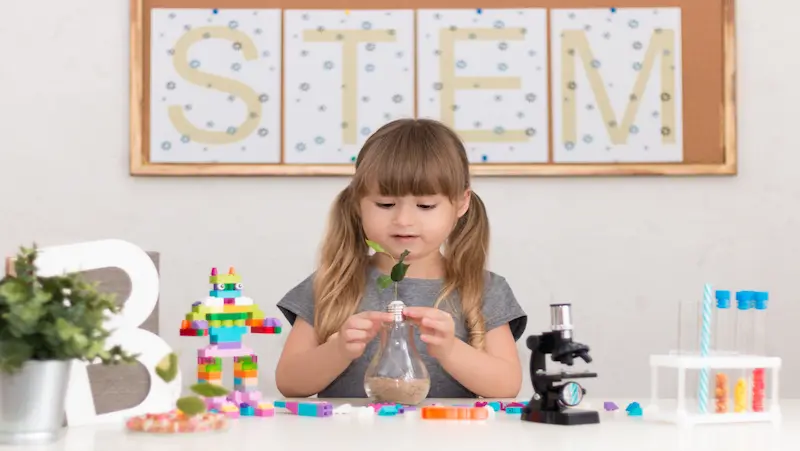
Before diving into the world of microscopic exploration, it is important to ensure your child’s safety. Here are some guidelines to follow:
- Supervise children during microscope use, especially when handling delicate samples or adjusting settings.
- Teach proper handling techniques, such as using both hands to hold the microscope and gently focusing the lens.
- Regularly clean the microscope, especially the lenses, using a soft, lint-free cloth.
- Avoid using harsh chemicals that may damage the optics.
- Store the microscope in a secure place, protecting it from dust, moisture, and accidental damage.
Inspiring Scientific Exploration
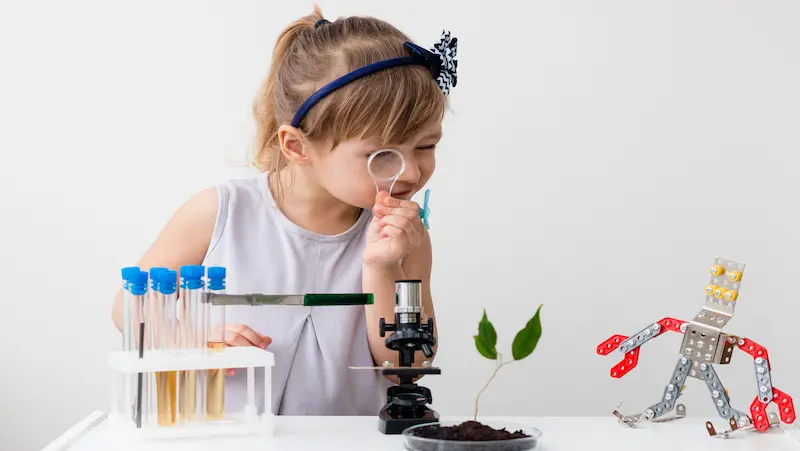
To nurture your child’s interest in science and maximise the benefits of microscopes, here are some inspiring activities:
DIY Experiments: Encourage your child to create their own experiments using household items. For example, they can examine different fabrics, food items, or plant specimens to observe their structures and textures.
Nature Exploration: Take your child on nature walks and collect samples like leaves, flowers, or insects. Back home, they can examine these samples under the microscope, uncovering the intricate details of the natural world.
Microscope Slide Preparations: Guide your child in creating their own microscope slides. They can gather samples like onion cells, pond water, or even a strand of their own hair. This hands-on activity enhances their understanding of sample preparation and microscopy techniques.
Conclusion
Introducing microscopes to children opens up a world of scientific discovery and enriches their educational journey. By promoting curiosity, critical thinking, and scientific exploration, these fascinating tools contribute to a well-rounded education. When choosing a microscope for kids, consider factors like durability, magnification power, ease of use, and safety features. By embracing microscopes as kid-friendly science equipment, parents can inspire a lifelong love for learning and exploration in their children. Let us embark on this exciting journey into the realm of science with our young explorers, using microscopes as their trusty companions.
Join the revolution in education with Brightchamps. Our courses in robotics, coding, and financial literacy empower kids to become confident and capable learners.
Frequently Asked Questions(FAQ’s)
A1: The best microscope for kids depends on various factors such as their age, level of interest, and intended use. Some popular options include the Celestron 44121, AmScope M158C-2L-E2, and TELMU Microscope. It is recommended to consider the features, durability, ease of use, and safety aspects when choosing the best microscope for your child.
Q2: How do I choose the right microscope for my child?
A2: To choose the right microscope for your child, consider factors such as durability, magnification power, ease of use, and safety features. Look for microscopes made with sturdy materials, adjustable magnification levels, user-friendly controls, and safety features like rounded edges and built-in lighting systems.
A3: Yes, there are kid-friendly microscopes available. These microscopes are designed with children in mind, featuring durable construction, simplified controls, and appealing designs. They often come with beginner-friendly instructions and educational materials to enhance the learning experience.
A4: Yes, young children can use microscopes with appropriate supervision and guidance. It is recommended to choose microscopes specifically designed for their age group and ensure they understand the basic operating instructions. Younger children may require assistance with sample preparation and focusing.
A5: When choosing a microscope for kids, look for features such as durability, adjustable magnification, user-friendly controls, and safety features like rounded edges and sturdy stands. Consider the age and skill level of the child to ensure the microscope is suitable for their needs.
A6: Yes, there are affordable options for children’s microscopes available in the market. Look for entry-level microscopes with basic features that still offer quality and durability. These options can provide a great introduction to microscopy without breaking the bank.
A7: Safety is crucial when using microscopes with kids. Ensure that the microscope has appropriate safety features like rounded edges and sturdy construction. Teach children how to handle the microscope responsibly, avoid touching the lenses, and supervise their usage. Follow proper cleaning and maintenance guidelines to ensure safe and enjoyable experiences.
A8: Encourage your child’s interest in science with a microscope by engaging in hands-on activities and experiments. Explore various samples together, such as plant cells, microorganisms, or prepared slides. Encourage them to ask questions, make observations, and record their findings. Support their scientific curiosity by providing relevant books, videos, and resources.
A9: Yes, there are microscope accessories and slides specifically designed for kids. These include prepared slides with interesting specimens, slide-making kits for children to create their own slides, and additional accessories like slide holders and covers. These accessories enhance the microscope experience and offer a wider range of samples to explore.
A10: Microscopes for kids are available for purchase from various sources. Online marketplaces like Amazon, educational toy stores, science supply retailers, and specialty microscope retailers offer a wide range of options. Additionally, local science centers or educational institutions may have microscopes available for purchase or recommendation.

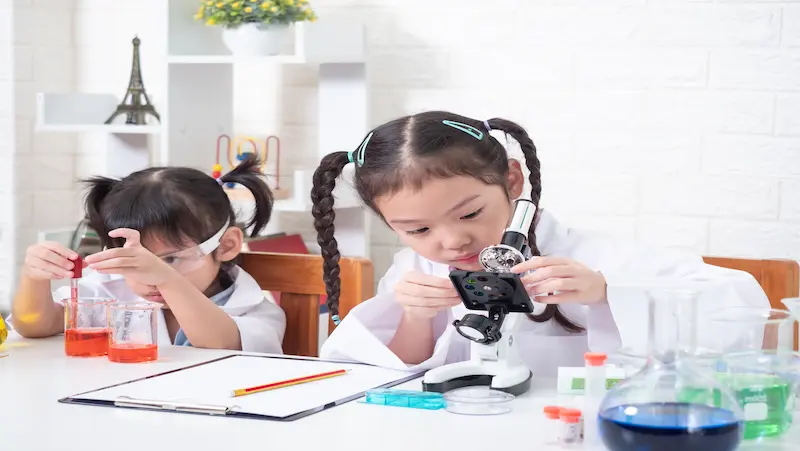
 We are an army of educators and passionate learners from BrightChamps family, committed to providing free learning resources to kids, parents & students.
We are an army of educators and passionate learners from BrightChamps family, committed to providing free learning resources to kids, parents & students.









